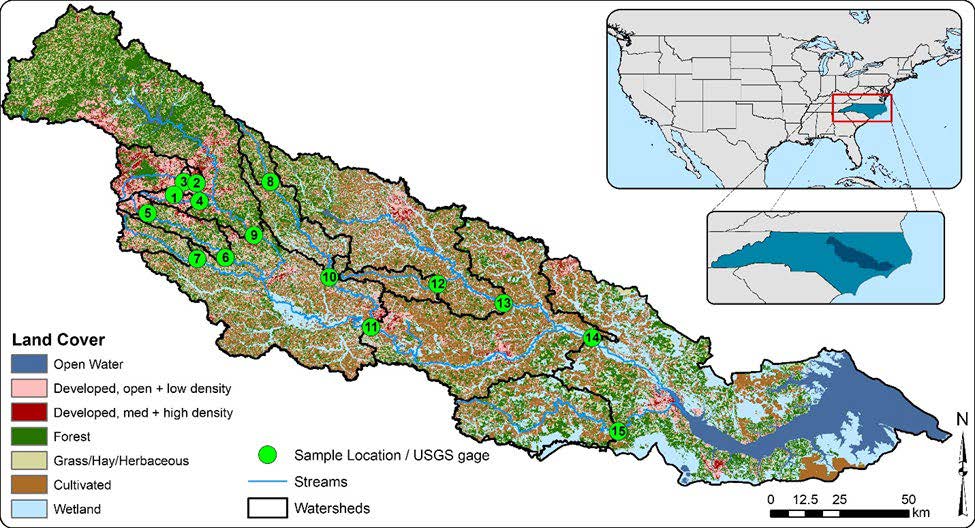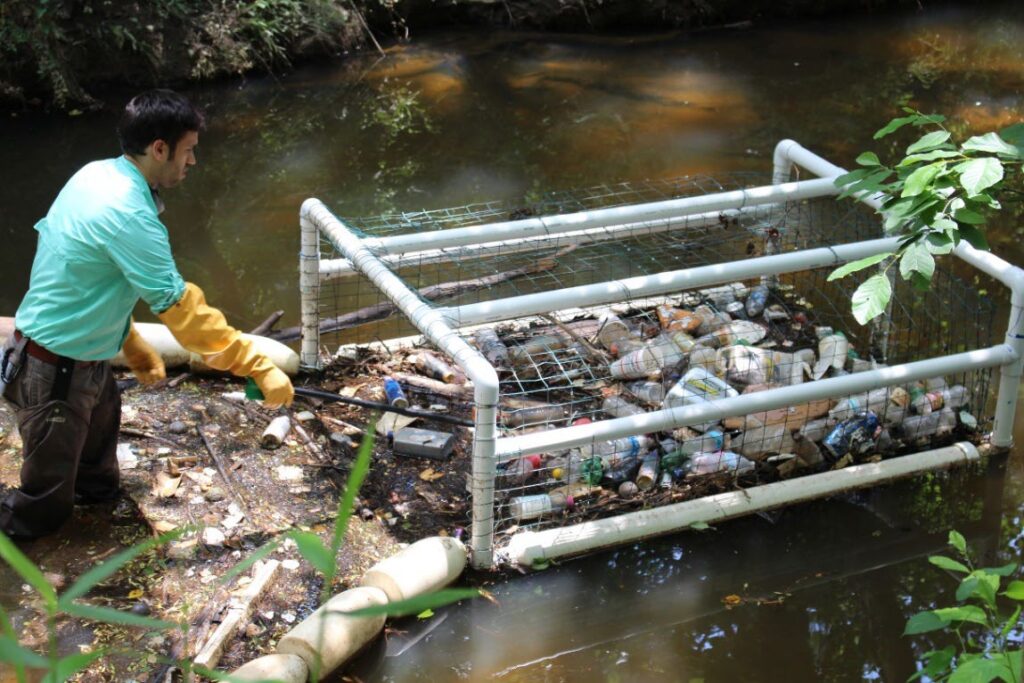Stormflow and Plastics
From Urban and Rural NC to the Neuse River and the Pamlico Sound
UPDATE: Jack Kurki-Fox, BAE Research Scholar, recently shared this team’s research on microplastics on WUNC’s Due South and Spectrum’s InFocus for EarthDay.
Recent research has revealed widespread plastics in our natural environment, and microplastics — smaller than 5mm — are present on every continent and in some of the most pristine areas of the planet.
To better understand plastic pollution in North Carolina, NC State University and North Carolina Sea Grant applied a variety of field sampling methods for macroplastics and microplastics at 15 stream gage locations throughout the Neuse River Basin, from Raleigh to Craven County, from July 2020 to August 2021. This study was the first sampling of microplastics for North Carolina freshwater rivers and streams.

What we studied
Our research team collected samples of plastics in the upper portion of the river basin using three methods.
First, we made regular collections of trash from a sample grid that included both the channel and the floodplain, including seven streams and a range of development conditions and watershed sizes.
Second, the team captured trash during stormflow at two highly urbanized streams using a trap composed of a basket and boom system, modeled after the Litter Gitter device (below).
Third, from bridges at two large tributaries and from a small highly urban stream in Raleigh, researchers made visual counts of floating trash during stormflow events.
The team extracted microplastics from trawl samples and analyzed them at the Plastic Ocean Project Lab in Wilmington. These analyses considered streamflow, land cover, and population variables to determine: 1) which factors influence microplastic concentrations, and 2) which types of land uses throughout the Neuse River basin deliver plastics.

What we found
There were several key results:
- Microplastic particles were present at all 15 locations.
- The most common types were polyethylene and polystyrene.
- Concentrations of microplastics were widely variable across seasons and flow conditions, ranging from 0.02 to 221 particles per cubic meter, with the highest concentrations observed in the most developed catchments during stormflow conditions. (1 cubic meter of water = approximately 264 gallons.)
- We estimate that about 670 million microplastic particles larger than 335 micrometers enter the Pamlico Sound from the Neuse River Basin each year. (1 micrometer = one millionth of a meter.)
- Floating trash was comprised almost entirely of plastics, and plastics also dominated the litter captured during storm flow using the trash collection boom and basket. Styrofoam pieces were the most common litter type observed using these two sampling methods.
- Grid samples contained a more diverse trash profile, with plastics comprising about 74% of all samples.
- Urban streams produced much higher counts of trash and macroplastics.
- All three macroplastic sampling methods show that the bulk of trash washing into our streams is plastics.
- We estimate a total annual load of floating trash of 120,250 pieces just for Marsh Creek (below).
- Only a small fraction of the total trash load is deposited on the floodplain or channel bed or entangled in debris in the riparian corridor during storm events. Rather, high flows commonly transport plastics downstream, likely into the mainstem of the Neuse River, where it will continue to wash into the Pamlico Sound.

Conclusions
Programs to prevent ground littering are critical in urban areas. Such programs would keep plastics from washing into the storm drain system and traveling to downstream rivers and estuaries of critical social, economic, and environmental importance.
From Engaging Partners to Evaluate Plastics Loading to the Pamlico Sound from Urban and Rural Lands via the Neuse River in North Carolina, prepared for National Office of Sea Grant’s Marine Debris Program.
See also: Microplastic distribution and characteristics across a large river basin: Insights from the Neuse River in North Carolina, USA in Science of the Total Environment.
